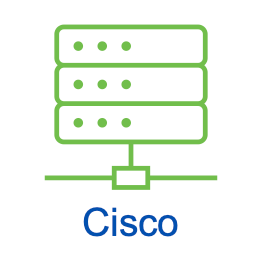SISE

Class Overview
Cisco’s Implementing and Configuring Cisco Identity Services Engine
, or SISE, training class teaches you how to deploy and use Cisco Identity Services Engine (ISE), an identity and access control policy platform that simplifies the delivery of consistent, highly secure access control across wired, wireless, and VPN connections.
This 5-day, hands-on training class provides you with the knowledge and skills to implement and apply Cisco ISE capabilities to support use cases for Zero Trust security posture. These use cases include tasks such as policy enforcement, profiling services, web authentication and guest access services, BYOD, endpoint compliance services, and Terminal Access Controller Access Control Server (TACACS+) device administration.
Through hands-on practice via lab exercises, you will learn how to use Cisco ISE to gain visibility into what is happening in your network, streamline security policy management, and contribute to operational efficiency.
This training class also prepares you for the Cisco SISE exam, which leads to CCNP Security, and the Cisco Certified Specialist - Security Identity Management Implementation certification.
Class Details
Objectives
After taking this training, the student should be able to:
- Describe the Cisco Identity Services Engine (ISE).
- Explain Cisco ISE deployment.
- Describe Cisco ISE policy enforcement components.
- Describe Cisco ISE policy configuration.
- Troubleshoot Cisco ISE policy and third-party Network Access Device (NAD) support.
- Configure guest access.
- Configure hotspots and guest portals.
- Describe the Cisco ISE profiler services.
- Describe profiling best practices and reporting.
- Configure a Cisco ISE BYOD solution.
- Configure endpoint compliance.
- Configure client posture services.
- Configure Cisco ISE device administration.
- Describe Cisco ISE TrustSec configurations.
Prerequisite Knowledge Advisory
Although there are no formal prerequisites, before taking this class you should have:
- Familiarity with the Cisco IOS Software Command-Line Interface (CLI) for wired and wireless devices.
- Familiarity with Cisco AnyConnect Secure Mobility Client.
- Familiarity with Microsoft Windows operating systems.
- Familiarity with 802.1X.
Required Exam for SISE Certification
Exam: 300-715 SISE
Proctor: PearsonVUE
Recertification: 3 years
SISE Training Class Outline
Introducing Cisco ISE Architecture
Introducing Cisco ISE Deployment
Introducing Cisco ISE Policy Enforcement Components
Introducing Cisco ISE Policy Configuration
Troubleshooting Cisco ISE Policy and Third-Party NAD Support
Introducing Web Authentication and Guest Services
Configuring Hotspots and Guest Portals
Introducing the Cisco ISE Profiler
Introducing Profiling Best Practices and Reporting
Configuring Cisco ISE BYOD
Introducing Cisco ISE Endpoint Compliance Services
Configuring Client Posture Services and Compliance
Working With Network Access Devices
Exploring Cisco TrustSec


